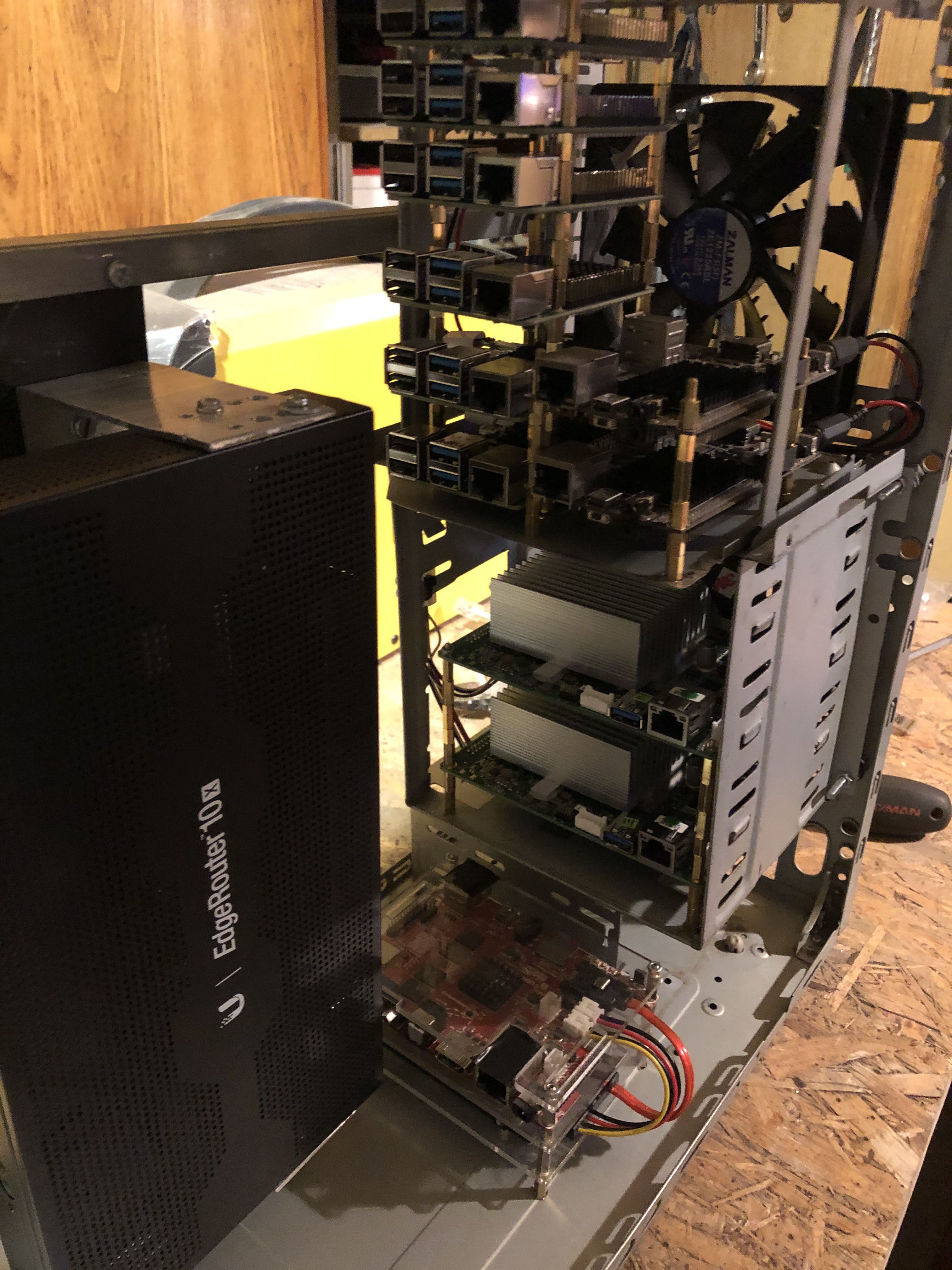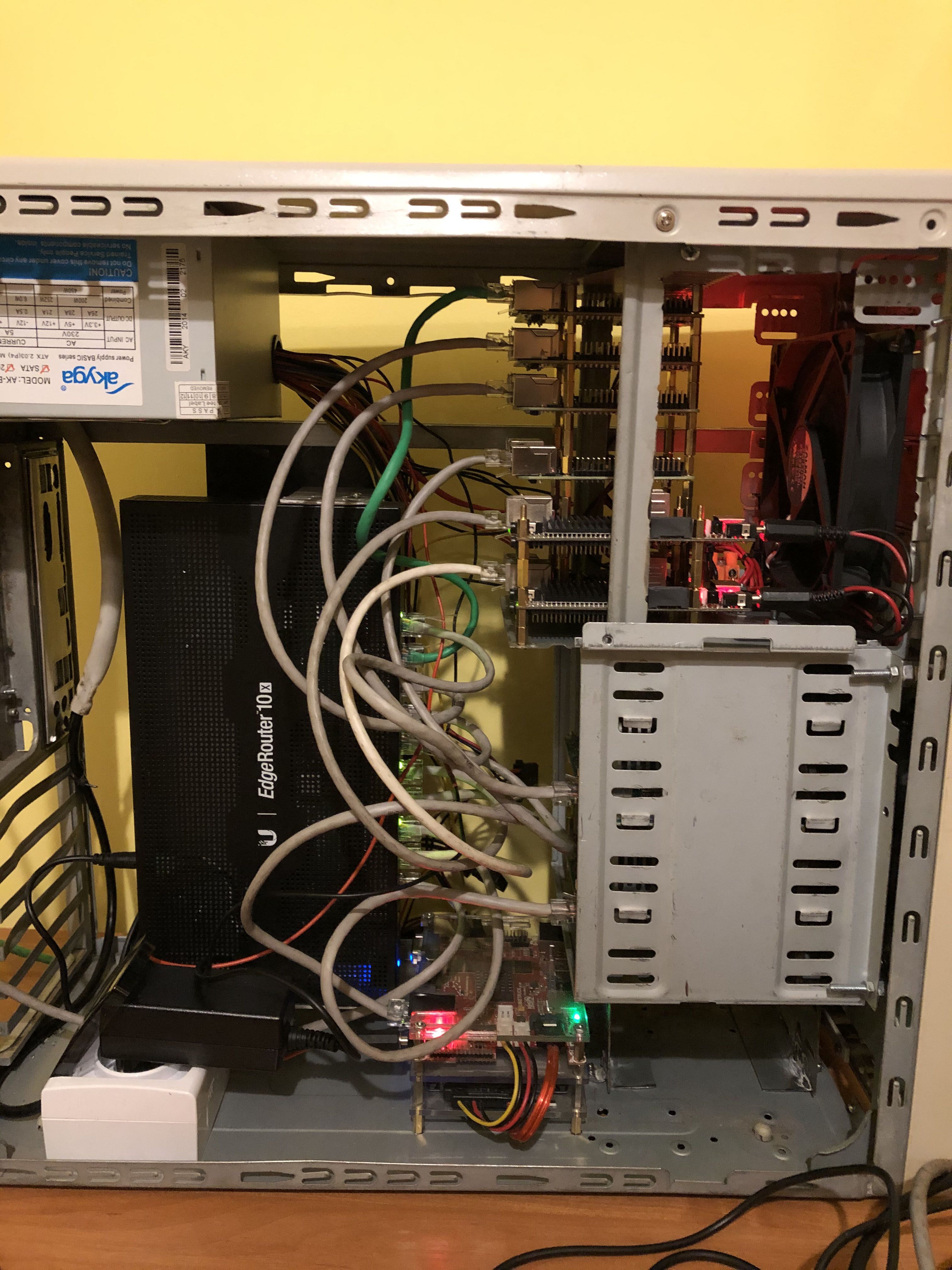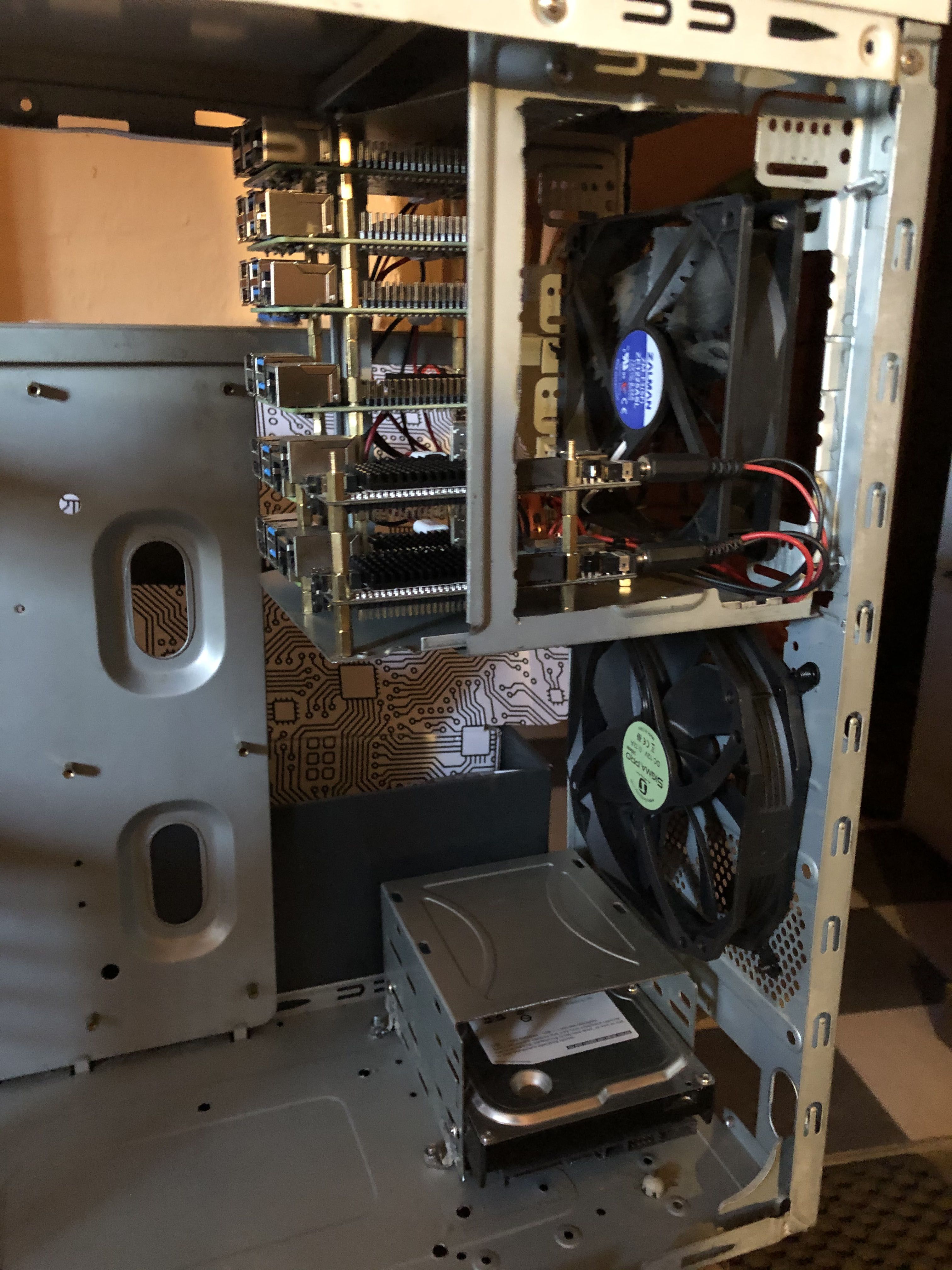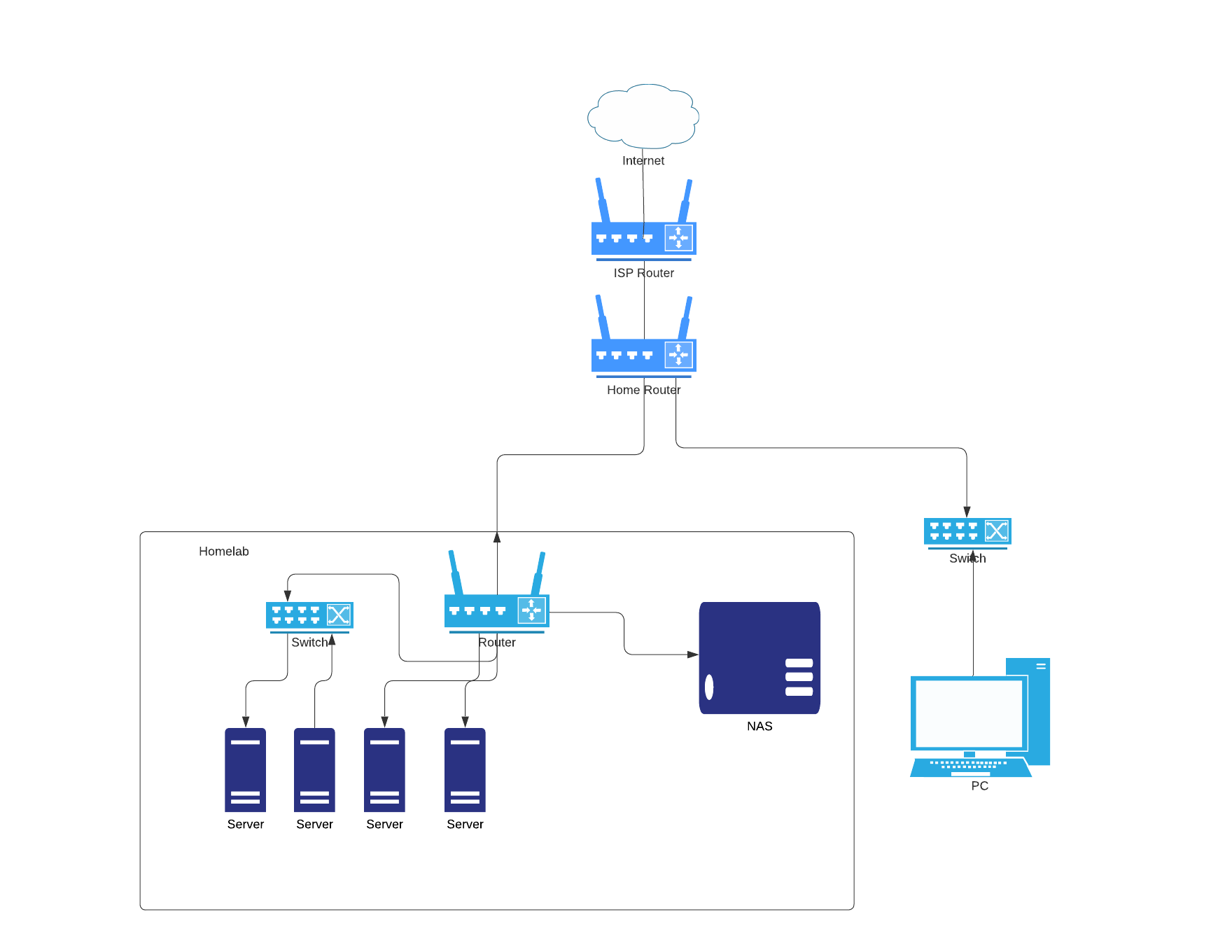Homelab - Kubernetes at home part 1
In this post I would like to describe my process of creating Kubernetes servers at home. By reading this post you will learn
- What hardware you can use
- How to setup network
- What CI/CD are useful to home cluster with single human operator
One caveat - this is from my perspective - what was working for me does not always work for everyone.
Motivation - background
In this paragraph I will describe why someone even would consider using Kubernetes in homelab. If you already know that you want to try K8S you can skip this paragraph.
Before my homelab I was using an OVH dedicated server on which I’ve deployed my webpage(PHP). Daily operations and deploying changes were very painful even with a deploy script. PHP backend started to be slow for me. So in my mind an idea raised to rewrite this to something new. While rewriting, why not change servers? In my home I’ve already got some Raspberry PI and Cubieboards so I wanted to reuse them. That’s how project for rewriting homepage and creating homelab started
Hardware
My idea was to have the homelab enclosed in a fairly small package. At this point of time I didn’t want to have an “ikea rack” server. And as this will be in my living room it has to be quiet. Taking my requirements into account I’ve chosen
- ARM64 - 4x Raspberry PI 4b 8GB RAM
- ARM64 - 2x RaspberryPi 4b 4GB RAM
- X86_64 - 2x AtomicPi 4GB RAM
I planned to reuse boards that I’ve already have:
- ARM - 2x Cubieboard 1GB RAM
- ARM - 1x Cubietruck 2GB RAM
As a case for everything I’ve used some old PC ATX case, so for power supply the best idea was to use PC power supply (instruction how to use PC power supply without motherboard can be found here)
| Inside of ATX case |
| Running homelab |
Network setup
For networking I’ve used one router with BGP capabilities (keep in mind you can use a simpler router with ARP Layer 2) this network configuration is necessary for exposing services via loadbalancer service type by using Metallb (more about it łater).
Cooling
When running such a setup 24/7 keeping temperature on a stable level is a key. To be sure that none of my computing power will overheat I’ve added 2 PC 12V fans. Speed of rotation of the fans is controlled by python script deployed to one of the Raspberry PI.
| 12 V Fans |
Python script controlling fans speed:
import RPi.GPIO as GPIO
import time
import logging
import logging.handlers
from systemd.journal import JournalHandler
log = logging.getLogger('temperature')
log.addHandler(logging.handlers.SysLogHandler(address = '/dev/log'))
log.setLevel(logging.INFO)
GPIO.setmode(GPIO.BCM)
GPIO.setup(12, GPIO.OUT)
p = GPIO.PWM(12, 100)
p.start(0)
time.sleep(5)
p.ChangeDutyCycle(100)
time.sleep(15)
tFile = open('/sys/class/thermal/thermal_zone0/temp')
temp = float(tFile.read())/1000
tFile.close()
log.info("Temp check started, temperature at start %f", temp)
changeCycle = False
prevCycle = 100
newCycle = 0
while True:
try:
tFile = open('/sys/class/thermal/thermal_zone0/temp')
temp = float(tFile.read())/1000
tFile.close()
if temp > 59:
newCycle = 100
elif temp > 55:
newCycle = 75
elif temp > 49:
newCycle = 54
elif temp > 40:
newCycle = 49
else:
newCycle = 47
if newCycle != prevCycle:
log.info("Change cycle to %d, temp %f", newCycle, temp)
prevCycle = newCycle
p.ChangeDutyCycle(newCycle)
time.sleep(60)
if newCycle > 74:
time.sleep(60)
time.sleep(5)
except Exception as err:
log.error("unknown error occured", err)
GPIO.cleanup()
exit
Software
Hardware part is finished now let’s talk about software
Network
Network configuration is done part in Ubiquiti wizard (basic network setup) and via ansible - BGP peers. But why do we need BGP or Layer 2 LB? If you want to expose service to external client you need to have some kind of load balancer to which you can route traffic. To do so on bare metal you can use MetalLb. It is very easy to install and has two modes of working. More about it here. My ansible playbook with configuration can be found here
| Network diagram |
Kubernetes
I need to confess something - I’ve lied in the title of this post. I’ve deployed k3s not k8s. Why? As I’m deploying to mostly ARM based servers I needed to have something lighter than full size Kubernetes. K3S is a smaller version of k8s designed to be deployed to less powerful servers. More about it https://k3s.io/ But for me as for now there is no difference in using K3s to k8s (in my work we are using full size kubernetes clusters). Installation of k3s on server is relatively easy - just run ansible playbook https://github.com/k3s-io/k3s-ansible. Example from my homelab https://github.com/aldor007/homelab/tree/master/ansible/k3s-ansible
On this stage we have Kubernetes cluster with network setup and few nodes ready to server traffic. Next we need to create some basic operation setup - monitoring, deploy pipeline, secret management etc. To manage this I’ve used helmfile. It allows user to create mono-repo of infra/seed helm charts that have to be deployed to the bootstrap cluster.
What next?
- Monitoring - prometheus-operator, grafana, loki
- Apps deploy Argocd
- Secret management vault-operator
Full configuration can be found here



